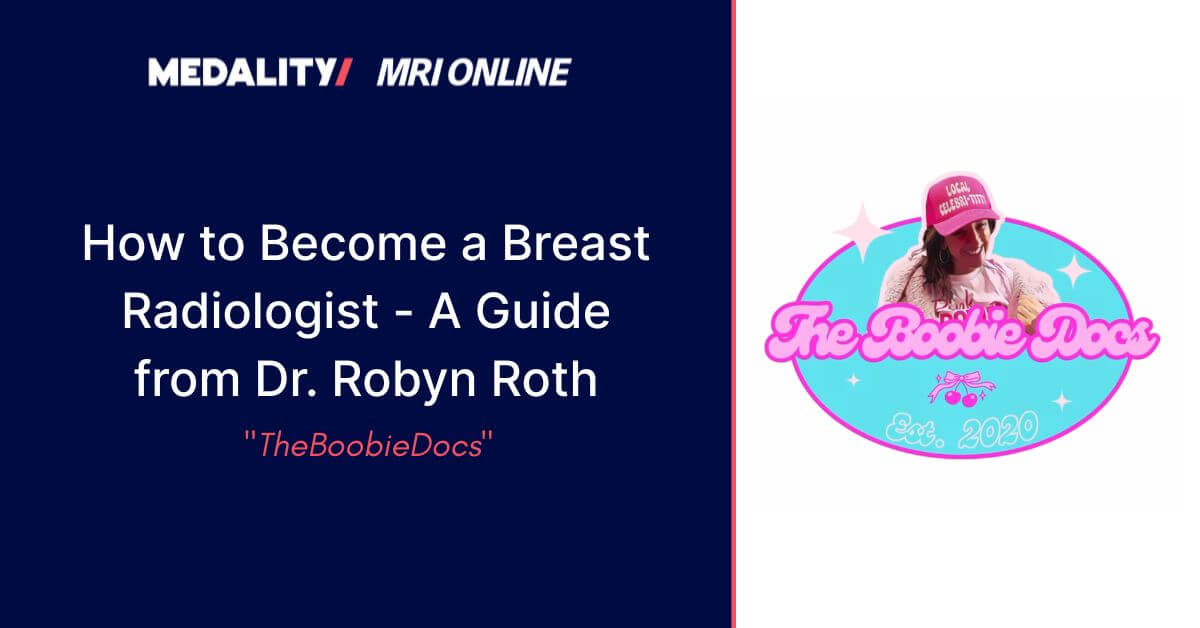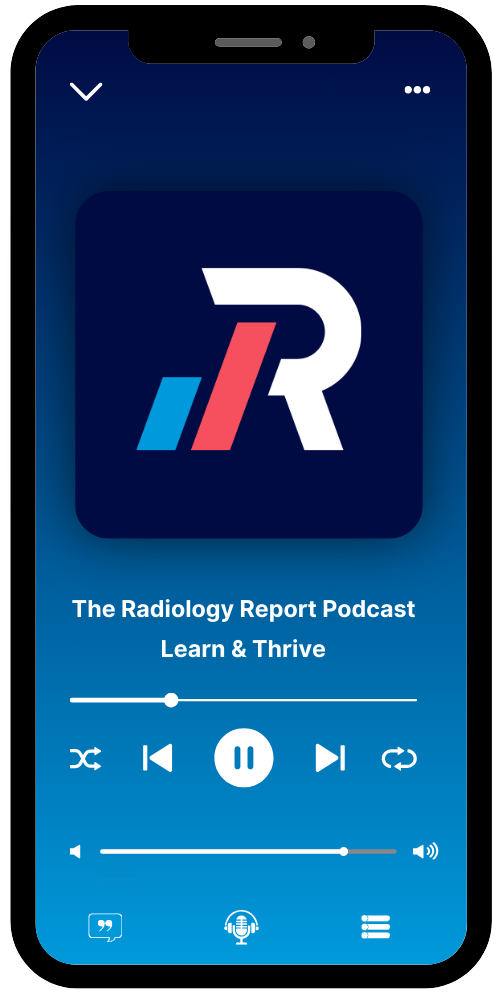At Medality, we believe the best insights come from those who live and breathe radiology every day. That’s why we’re excited to feature Dr. Robyn Roth, a breast radiologist and the creator behind @theboobiedocs, in this expert-led breakdown on how to become a breast radiologist and what it really means to specialize in breast imaging.
Transcript
Dr. Robyn Roth aka “The Boobie Docs”
"Hi and welcome to my series Breast Imaging for Breasties with me Dr. Robyn Roth, aka @theboobiedocs. I am a breast radiologist, which means that I'm the doctor who would interpret your breast imaging studies. In order to become a breast radiologist, I had to do four years of undergrad, four years of med school, one year internship, four-year radiology residency, and then I also had to do a one-year fellowship in breast imaging.
Not all radiologists can be a breast radiologist. In order to be a breast radiologist, you have to read 960 mammograms in a two-year period. This is regulated by the Mammography Quality Standards Act or MQSA. There are three main types of breast imaging studies that we use as breast radiologists.
Mammogram, which is the gold standard for breast cancer screening, plus Ultrasound or MRI depending on your breast density and your risk level. There's a question mark around breast CT which is a new one involving technology. Notice how I did not mention thermography and QT imaging, which is not supported by breast radiologists.
So mammogram is the mainstay in breast cancer screening. It is a low dose X-ray of the breast. It has less than three (<3) msv per view by MQSA. That means nothing to you but it's very low dose. We take 3D images of the breast. It is the only imaging modality that can detect microcalcifications of DCIS or Ductal Carcinoma In Situ, which is the earliest form of breast cancer. You need compression because it decreases motion and overlapping breast tissue. Quality has improved over time and dose has decreased over time. This is actually a case of DCIS.
This is what a mammogram machine looks like and this is what a mammogram picture looks like. Mammogram becomes less sensitive as your breast increases in density. You can see the four breast density categories. Breast cancers are white and so is dense breast tissue. So the more dense your breast become, the harder it is to find the small breast cancer.
Which is why I am a huge fan of Contrast Mammography. I promise you, I'll be talking about this more because I'm done gatekeeping Contrast Mammography. But personally, I think this is the future of breast imaging, especially in women with dense breast tissue. This is a case of dense breast tissue and this is the same patient on the contrast mammogram. You can see she's got bilateral multicentric cancer.
Next up is Ultrasound. Ultrasound has no radiation. It uses sound beams to penetrate through the dense breast tissue. It helps characterize whether masses are cystic or solid. The downside is that it can't detect the microcalcifications of DCIS, which is why mammography still plays an essential role even in women with dense breast tissue. It is used as a supplement for mammography. It is also the first line imaging tests in patients under the age of 30 years old.
MRI, or magnetic resonance imaging, uses magnets to create high quality pictures of the breasts. It requires a gadolinium injection, which can be problematic for patients that have kidney disease or diabetes. It's a longer test that usually takes around 15 to 45 minutes. It's also a much more expensive test, which is why it's usually reserved for high risk individuals that have a greater than 20% lifetime risk of breast cancer. It also cannot detect microcalcifications or the early signs of DCIS. It is sensitive, but not specific, meaning it can pick up lots of things that is missed by mammography but not all of them are important. Sometimes we have to do MRI biopsies, which I promise I will get to in a future video.
MRI is how we assess silicone implants. This is a silicone implant and this is a post contrast image that is normal. This is what it looks like when you're getting an MRI. You are laying on a table and staying in the magnet that makes a loud noise for 15 to 45 minutes, so it's not for everybody.
Breast CT is a new and emerging technology that even I'm not that familiar with. It essentially takes 3D X-rays of the breast, but it requires no compression, which is the benefit. You may be able to see through dense breast tissue a little bit better. The big cons are that it has a higher radiation dose. It's not widely available and it can be expensive.
I hope this was helpful. As always, follow @theboobiedocs for more of the breast information."




